|
COVER STORY | IN THE NEWS | STAGE MATTERS | OFF THE PAVEMENT | ARTBEAT December 21, 2006
IT WAS THE YEAR OF EUREKA. As we noted back in October, just as the elections were coming around, the county's capital is no longer a simple town with simple issues. It's a strangely complex place, located smack at the center of the social, cultural, political island that is Humboldt County, and this year it faced real, big-city questions -- questions of politics, policing and land use. And the narrow results from November's elections would seem to indicate that these questions are far from settled. Eureka institutions were at the center of a number of other important, county-wide questions this year. The crisis at St. Joseph Hospital in the first half of the year prompted everyone to take a look at the state of health care in Humboldt County. Humboldt County's media scene, anchored by the battling Times-Standard and the Eureka Reporter, was the subject of a profile in the San Francisco Chronicle, whose reporter marveled at the county's unique, variegated media landscape. Elsewhere, economic questions were at the front, as usual. Two key Humboldt County institutions -- Humboldt State University and the Pacific Lumber Company -- altered their modus operandi to try to keep their heads above water. Southern Humboldt erupted in a sort of civil war over the operation of the annual Reggae on the River concert, the proceeds from which had dried up in recent years, prompting layoffs and threatening the existence of the Mateel Community Center. Finally, the '70s generation that has come to define what Humboldt County stands for within the world at large lost one of its principal lights -- Tim McKay, founder of the Northcoast Environmental Center. McKay died too young, by far. It was a tragedy in itself, and it also seemed to remind his cohorts in business, in government and in the nonprofit sector that they would have to make their arrangements to pass the baton to a new generation. What that generation does with it will be seen in the coming years, or decades.
For years there had been rumblings, mostly from activists of one sort or another, some of whom found themselves at the wrong end of confrontations with the Eureka Police Department. But with the April shooting of Eureka resident Cheri Lyn Moore, a mentally ill woman, the EPD became a county-wide locus of controversy throughout 2006.
Humboldt County Coroner Frank Jager convened a public inquest into the Moore shooting in September. For several days, police officers involved in the shooting, as well as others connected with the incident, gave testimony on what had occurred that day, and why. The EPD gave its most complete statement to date about why it decided it had to rush Moore in her apartment -- the flare gun represented an unknown quantity, commanders said, and they feared that the weapon, if discharged into the ceiling, would have led to an uncontrollable fire. But the inquest left many questions unanswered, and by the end, the wisdom of the particular decisions made that day were still open for debate.
Then, earlier this month, the EPD found itself in another downtown standoff, this time against a man wanted on warrants for child molestation in Trinity County, and the department, now serving under Interim Chief Murl Harpham, handled the situation completely differently. The department waited the man out for a day and a half before firing tear gas into his motel room, whereupon he exited into a hallway armed and threatening before being shot dead. The patience exhibited in the case may have been a result of the different leadership, or the bad press the department had received, or the fact that the man, Jonni Honda, was equipped with a conventional firearm rather than the more volatile flare gun. Whatever the case, nearly all the department's critics were satisfied with the way it had been handled. The Moore and Burgess incidents will continue to be with us for some time, it appears. Both families have threatened to file suit against the city, with Moore's survivors having retained the services of Dennis Cunningham, the San Francisco attorney who last year won a case against the city and the Humboldt County Sheriff's Office stemming from 1999's pepper spray incidents. And they will no doubt be on the minds of many as the city prepares to hire a new chief of police in the coming months. Above left: Cheri Lyn Moore. Above right: Burgess shooting protestor. -- Hank Sims
The rumors had been swirling for some weeks, but it wasn't until Jan. 12, in these pages, that Cherie Arkley uttered those fateful words: "Home Depot." Since 2004, it had been known that the Arkley family,
owners of national financial firm Security National (as well
as the Eureka Reporter newspaper) were going to propose
to build something on that old piece of railyard along the Eureka
waterfront known as the Balloon Track. The site had a controversial
history; back in 1999, an uprising of Eureka voters went to the
ballot box and killed Wal-Mart's plans to build one of its megalith
stores upon it. The dispute divided the community. People who
were once friends permanently fell out over the issue. (Among
them were then-Mayor Nancy Flemming, who supported Wal-Mart,
and Supervisor Bonn But what, specifically, were the Arkleys planning to do with the site? That wasn't known until this year, and when the Home Depot announcement was made, many were shocked. In an interview with the Times-Standard prior to the unveiling of plans, Cherie Arkley had specifically said that the site would not include a big box store. That had changed, clearly. Arkley said that further environmental review of the site showed that housing would not be financially feasible; a commercial center, with office space, was the only option, and a commercial center needed to have an "anchor tenant" to work. Opposition arose almost instantly, and it organized along a few parallel lines. On the one hand, there was the argument made during the Wal-Mart fight -- that a big box store would end up being a net drain on the local economy, and would put all sorts of local firms out of business. Then there was the environmental argument. The Arkleys proposed to clean up the contamination on the site, but only to a level that would allow for retail development; others, including the newly formed Citizens for Real Economic Growth, started to push for a "full cleanup." Humboldt Baykeeper, a watchdog group, filed suit against Security National and Union Pacific, charging that the site was leeching toxic contaminants into the bay. A third critique was backwards-looking in nature -- it lamented the fact that the city had dropped a public process that had intended to look at various options for the site, apparently at Rob Arkley's behest. (Arkley himself took credit for killing it, in any case.) At the same time, there was something of a quiet backlash. Security National had introduced changes to the initial project, devoting a good chunk of it to wetlands restoration and open space. When election season rolled around, candidates from all sides deemphasized the importance of the proposed project, called "Marina Center." Anecdotally, and according to polls conducted by the Chamber of Commerce, people seemed to favor the development. It's the biggest land-use question to face the city for quite some time. The battle, surely, will go on. One gets the feeling that right now, at the end of the year, everyone is pausing for breath. Above: Eureka's Balloon Track. -- Hank Sims
They lasted longer than most -- several months of campaigning up to election day, then several weeks afterwards. In truth, they're not quite done even yet. Still, it is quite clear by now that the progressive push in the City of Eureka's November elections came up short.
The campaign turned out to be surprisingly quiet. The expected last-minute "dirty tricks" never materialized, though on election day Security National ran a mysterious get-out-the-vote effort. Teams of young folks decked out in Marina Center garb stationed themselves at polling places, poring over voter rolls. Perhaps it made the difference. Weeks later, when the final tally came through, Bass and Leonard had won by the smallest of margins. The only victor from the progressive slate was Glass, who had actually moved into the city limits specifically to run for council. Bass' ascension to the mayorship has left her old council seat vacant. In all likelihood, the remainder of her term will be filled by an appointee. Therein lies the rub. On certain fundamental questions, such as the Marina Center, the City Council appears to be split -- Leonard and Jones on one side, Glass and Councilmember Chris Kerrigan on the other. An appointee must receive majority approval. Mayor Bass, who casts a tie-breaking vote on questions in which the council deadlocks, would appear to have the upper hand. But she has pledged to appoint a consensus candidate, if one exists. Above left: Virginia Bass. Above right: Larry Glass. -- Hank Sims
From the very start, 2006 looked bleak for St. Joseph Hospital in Eureka. Late January saw resignations from top administrators and on Feb. 1 the captain himself, CEO Mike Purvis, walked the plank -- at the urging of the Catholic nonprofit's Orange County parent, St. Joseph Health System -- after seven years at the helm. During Purvis' widely criticized tenure the hospital made some serious missteps: St. Joe's bought competitor General Hospital for $30 million, about five times its worth; large physicians practices were purchased only to be shut down; nurses unionized despite the hospital's expensive efforts to stop them; and in 2004 Humboldt Radiology doctors ended a 42-year relationship with the hospital and started their own practice.
In May, 74 employees were laid off. But that wasn't enough savings. St. Joe's needed a miracle to cover the hospital's $71.8 million debt, not to mention an impending $100 million seismic retrofit for 2013. Through the spring and summer, St. Joe's weighed its three options -- maintain ownership and weather the storm, sell, or become a public hospital district. County Public Health Officer Dr. Ann Lindsay and the Community Health Alliance held public forums to see what Humboldt County wanted. But the findings did little to sway St. Joe's leadership. In late August the Sisters and local administrators decided to keep the faith-based hospital. And in late September, Eureka's prayers were answered: The Sisters forgave the enormous debt, distributing it across the balance sheets of other St. Joe-owned hospitals in California and Texas. As the year comes to a close the storm has subsided somewhat. Joe Mark has reunited Humboldt Radiology with St. Joseph, a move that will capture lost revenue and improve the hospital's reputation. And more savings are en route. In recent months Mark and his administrative crew have discovered more than $2 million worth of leaks in billing, supply purchasing and equipment maintenance. Now, it's a matter of keeping the hospital afloat for the long-term and Mark's vision for the future is already stirring discontent. He firmly believes that St. Joseph of Eureka will be the only acute-care hospital in Humboldt County 10 years from now. According to Mark, the North Coast's meager (and relatively poor) population cannot sustain three full-service hospitals. The others will simply need to downsize. But Mad River Hospital, in Arcata, doesn't want to hear it. Neither does Fortuna's Redwood Memorial, also owned by the St. Joseph Health System. For now it seems that St. Joe's won't get its way unless it's willing to compromise. Above: Joe Mark -- Helen Sanderson
The downscaling of the Pacific Lumber Co. proceeded apace. By the end of the year, the new management team was admitting the fact -- nay, trumpeting it -- that the once-mighty timber giant, the economic engine of the Eel River Valley and a hardball political player on the local, state and federal levels, would heretofore be just another sawmill, albeit one that still holds title to around 200,000 acres of Humboldt County land. But that's less land than it owned in Ja Meanwhile, work continued on the long-range plan to parcel off the town of Scotia -- PL's HQ, and one of the last company towns in America. The city of Rio Dell commissioned studies and held meetings to look at annexing its sister city across the Eel; the company met with town residents and gauged their interest in becoming homeowners. After the July bond payment was made, CEO Robert Manne left the company, along with other top managers. George O'Brien, a former executive with International Paper, took Manne's place. Then, at the beginning of this month, the company laid off almost 90 workers, bringing its total workforce down to about 400 -- a new post-Maxxam low. For once, the company didn't blame environmentalists for the layoffs; O'Brien said that the international market for softwood lumber, currently at a low, was the trigger. Plus, it can't be denied, the company's new high-tech mill facility doesn't require as many humans as before. This is a leaner, and maybe not meaner, Pacific Lumber taking shape before our eyes. How will it fare? The question, as it has been for some time, is whether the company can scrape together enough cash twice a year to meet its crushing bond debt, a legacy of the Maxxam takeover. Large infusions of capital from land sales may help, but it won't be enough on its own. Above: Palco Mill in Scotia. -- Hank Sims
A take-no-prisoners election challenge from within the office, red-handed plagiarism, terminal short-handedness, high-profile cases ignored or overturned on appeal -- all in all, it was a pretty quiet year for District Attorney Paul Gallegos. But as the list would indicate, even Gallegos' down times pretty much out-Richter those of most anyone else you could care to name. The first half of the year was taken up by the
election. Gallegos was running for the office for the third time
in four years, including the failed, Maxxam-financed recall attempt
against him in 2004. This time, his challenger was Deputy DA
Worth Dikeman, a veteran Humboldt County prosecutor, who had
announced that he'd seek to oust Gallegos nearly a year previous,
back in the summer of 2005. The race was not frie A couple of prosecutors quit. Dikeman was fired. In August, news broke of a horrible case of animal abuse out in the hinterlands, with 41 dogs found dead or dying of neglect just over the border in Trinity County. It turned out that the alleged perpetrator, Roberta Bugenig, had just moved there from the Bridgeville area, where the Humboldt County Sheriff's Office had filed felony animal abuse charges against her in 2004. Gallegos' office had declined to prosecute the case. The discovery of these facts prompted condemnation from animal rights activists. Seemingly in response -- in fact, it was never quite clear -- Gallegos published an opinion piece titled "Vigilantism A Force Of Anarchy" in the Times-Standard. The piece's odd phraseology prompted the Eureka Reporter's Heather Muller, who had originally reported the Bugenig case, to do a Google search; as it turned out, much of the op-ed had been lifted straight out of an academic paper on The Ox-Bow Incident. Not all the post-election news was as embarrassing -- or not yet, at least. In November, Gallegos finally filed the long-delayed appeal of his office's sprawling fraud lawsuit against the Pacific Lumber Co., which had been tossed out of court a year and a half prior. The suit, along with Gallegos' generous medical marijuana policy, is the thing that first defined his tenure in the office, and gave him a reputation as a crusading people's prosecutor. Will the appeal bring back some of the magic? Above left: Paul Gallegos. Above right: Worth Dikeman -- Hank Sims
It's an awful Catch-22. The more full-time students a university enrolls, the more funding it receives from the California State University System. But when the university doesn't meet student enrollment goals, money is taken away. With less funding, it's harder to retain students and therefore harder to meet enrollment goals. This is the situation Humboldt State has been toiling with for the past two years.
Layoffs needed to be made. Twenty lecturers were told they'd be out of a job in the spring semester. Class size increases -- some to as high as 300 students -- and a reduction of course offerings were proposed. It appeared as if HSU's best selling point -- a low student-to-teacher ratio -- was eroding away and nothing could stop it. In response, group of students from Community Action United to Save Education (CAUSE) trekked down to Long Beach in mid-November to meet with the CSU system's top brass in a last ditch effort to restore the spring semester. The day they returned to Arcata several lecturers were told they had their jobs back, at least for next semester. Mega classes were off the table, perhaps. But HSU's problems are not over. Next year's budget will be slashed by another 5 percent. Those mega classes may still take shape and it is possible that more lecturers will be laid off. But one important silver lining in this dark picture has appeared: Applications for fall 2007 are out-pacing last year's record-breaking batch. College of the Redwoods has also faced lean times. Enrollment is down, deficits are up. This year the junior college faced a $1 million shortfall and red ink projections for 2007-08 are upwards of $3 million. Meanwhile, CR has had a warning from the Accrediting Commission for Community and Junior Colleges hanging over its head since January. The new administration (former President Casey Crabill left for a new job amid much community fanfare this summer) has responded by extending enrollment deadlines, increasing class sizes, implementing a hiring freeze, advertising on TV and surveying students about why they drop out. Like Humboldt State, CR seems to be fully embracing the idea that it takes money, er, students to make money. The quality of education will just have to play catch up when funding is stabilized. Above: Rollin Richmond -- Helen Sanderson
A dispute involving Humboldt County's largest fundraiser, Reggae on the River, bubbled up as the year ended, finding the Mateel Community Center, the Southern Humboldt nonprofit that owns the multi-million-dollar event, seriously at odds with People Productions, its coordinators. Up until recently, the relationship between the two organizations had seemed symbiotic -- at least on the surface. Proceeds from Reggae on the River built the community center, a multipurpose hall in Redway, and for years provided the bulk of funding for the nonprofit to run its associated programs.
People Productions and its CEO Carol Bruno contended that the reduced income was a result of costs incurred when the festival expanded in 2006, moving the concert area from French's Camp, where the concert had been held for 22 years, to a new piece of land upriver, the Dimmick Ranch. People supporters also charged that Stapp and Mateel staff had "squandered" the millions the organization received from Reggae over the years. Losses on smaller events run by the Mateel, including the bluegrass festival, Humboldt Hills Hoedown, and a Renaissance Fair-style event, The Festival of Courage, were offered as examples of "mismanagement" by the current Mateel leadership. Both sides called for supporters to come out in force for the Mateel's annual membership dinner Nov. 17, with hopes that some solution might be found. The meeting saw Bruno announce her intention to terminate her contract to run Reggae; the Mateel Board countered saying they would hold her to her contract and demanding an audit. Community members aired long-buried grievances in a series of passionate speeches. While the meeting was perhaps cathartic, nothing was resolved. In the end all that was agreed was that mediation was in order. As the year comes to a close, the Mateel staff has been laid off and the proposed mediation is in fact in process, as is an audit. Both sides are abiding by a strict confidentiality clause. With the future of Reggae in the balance, the discussion is once again behind closed doors. Above: Reggae on the River badge -- Bob Doran
On New Year's Eve 2005, Humboldt County fell thrall
to a nasty, sensational weather event that began with high tides
and ceaseless rain and screamed into frenetic high gear with
a bent-back occluded front -- a freaky sudden pretzeling of a
merged cold front/warm front. Warp-speed west winds snapped fo As for the news readers: Well, if they weren't preoccupied with watching water spray fiercely into their homes through every closed window as unheard-of winds forced rain past glass and caulking, they likely were rubbing their palms together in anticipation of a new day -- a new year -- in which two daily newspapers would go head to head to match wits, trade barbs, scoop the hell out of each other and otherwise make Humboldt County a better place to read the news. Because, the next day -- Jan. 1, 2006 -- local boy and mr. moneybags, Rob Arkley, Jr., was planning to re-launch his free newspaper, the 2-year-old Eureka Reporter -- first a weekly, then a thrice-weekly -- as a daily, ramping up the challenge to that Old Pulp, the ad-fueled 152-year-old Times-Standard. Sure, there was the small matter of wildly mismatched financing devices between the two beasts. But anyhow .... Of course, the year that followed would hold more intrigue than a mere old-fashioned newspaper war, spiced by what some may call an unfair deep-pocket advantage, a stingy corporate absentee parent and a rumor of spurious motives; there would be lesser storms, in other newsrooms. But let's start with the morning after that mischievous bent-back occluded effrontery. Such news! January 1 Eureka Reporter Misses First Day As Daily, Cites Weather As Culprit; Rival Times-Standard Staffers Crow Inside Their Cramped Windowless Den February-May ER Sticks With Balloon Track; T-S Firm On Balloon Tract June T-S Staff Defections to Shiny New Digs At ER Continue; Morrow, Hamill Latest; Good Gravy Rumor August SF Chron 'Chutes in to Cover 'Rumble in the Redwoods'; MediaNews Group Chief Dean Singleton Tells Chron He's Not Worried About ER; ER's Arkley Says He Doesn't Read T-S Seldom-Seen Arcata Weekly The Advocate Folds, Comes Back, Folds Again With Bitter Farewell; Cites Arkleys, Corporations, Others September T-S Boots Charles Winkler From Top Ed. Post; Bosses Call It Promotion to Contra Costa Times; But Winkler Stays In Town T-S Announces New Editor, Newspaper Guru Rich Somerville; New Ed. Ponders Skylights; T-S Staffers Officially Delighted October ER's 'About Town' Scenester Columnist Andrea Arnot Jumps Ship For Palco Publicity Post; Snidesters Mouth Maxim 'Loose Lips Sink (Already Profoundly Listing) Ships' T-S Reporters Q-A Waterfront Bizzes; ER Suspiciously Reports On Reporters Reporting November ER Top-Fold Heds Getting Bigger and BIGGER Belt-Tightening By T-S Parent Co. MediaNews; Sister Papers Suffer Layoffs; Snacks Kitty Nixed at T-S December T-S Staffers Faulk, Durant Homeless, Living And Begging On Streets! -- Heidi Walters
When Tim McKay died, the image that entered the public consciousness immediately was that of an old-growth giant, cut prematurely from its roots, crashing to the forest floor. He'd been birding at Stone Lagoon on July 30 when he had a massive heart attack. Shock waves tore through the community, and people said he was indeed a giant of a man -- in physical stature, and in the local conservation movement.
But McKay's passing marked more than the end of his particularly passionate role in the pioneering days of environmentalism. He was also the first of his generation to pass on -- a generation of local progressives that began flooding the region in the late 1960s and early 1970s, upsetting the old status quo that naturally had formed during the region's timber heyday. While McKay was fighting the G-O Road, monitoring timber harvest plans, working to save old redwoods, forming coalitions with tribes and fishermen and fighting to protect river habitats, Wesley Chesbro and Alex Stillman were bending the Arcata City Council into a more liberal form; rag-tag earnest doctors and nurses, including Hermann Spetzler, were providing accessible health care for all with the new Humboldt Open Door clinic (begun the same year as the NEC); and the Co-Op was opening its own new doors. It was a heady, hippie, radically active time -- and McKay was in the thick of it. Though stunned by the unexpected loss of McKay, the NEC has picked up the pieces and forged ahead, with Susan Penn serving as acting director and Erica Terence editing ECONEWS, and long-time activist Greg King stepping in to host the Thursday radio Econews Report at 1:30 p.m. on KHSU. Meanwhile, the search is on for a permanent executive director -- hopefully someone up to filling the very large void left by McKay. Above: Tim McKay --Heidi Walters COVER STORY | IN THE NEWS | STAGE MATTERS | OFF THE PAVEMENT | ARTBEAT Comments? Write a letter! © Copyright 2006, North Coast Journal, Inc. |



 The
short-lived police standoff with Moore was prompted by her call
to the county's mental health department on the morning of April
14. She was despondent and desperate. She said she needed her
medicine, and warned that she was prepared to burn down her downtown
apartment building if she didn't get it. The EPD was notified.
Officers were dispatched to perform a welfare check on the woman,
at which point she drew a flare gun on them. The situation quickly
escalated. The block was cordoned off and a command center was
set up inside the building. The standoff had only lasted a little
more than two hours when a SWAT team broke down her door to find
her pointing the flare gun at them. Officers opened fire, killing
her instantly.
The
short-lived police standoff with Moore was prompted by her call
to the county's mental health department on the morning of April
14. She was despondent and desperate. She said she needed her
medicine, and warned that she was prepared to burn down her downtown
apartment building if she didn't get it. The EPD was notified.
Officers were dispatched to perform a welfare check on the woman,
at which point she drew a flare gun on them. The situation quickly
escalated. The block was cordoned off and a command center was
set up inside the building. The standoff had only lasted a little
more than two hours when a SWAT team broke down her door to find
her pointing the flare gun at them. Officers opened fire, killing
her instantly. A
month and a half after the inquest ended, the EPD was called
to assist probation officers who were attempting to take 16-year-old
Christopher Burgess into custody. The teenager, wielding a knife
and (as was later determined) high on methamphetamine, had threatened
probation workers and fled. Officers followed him into a gully.
There was a confrontation, and the boy was shot dead. Once again,
some people wondered why it had to happen that way.
A
month and a half after the inquest ended, the EPD was called
to assist probation officers who were attempting to take 16-year-old
Christopher Burgess into custody. The teenager, wielding a knife
and (as was later determined) high on methamphetamine, had threatened
probation workers and fled. Officers followed him into a gully.
There was a confrontation, and the boy was shot dead. Once again,
some people wondered why it had to happen that way. ie
Neely, who opposed it. Flemming took a run at Neely's seat this
fall, but fell short.)
ie
Neely, who opposed it. Flemming took a run at Neely's seat this
fall, but fell short.)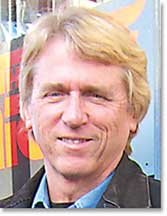
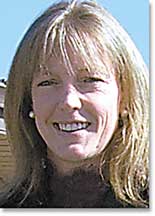 It
was a winner-take-all election, with both the mayorship and a
City Council majority at stake. Time, money and energy from around
the county poured into the city, aimed at an effort to elect
the progressive "slate" -- Mayor Peter La Valle and
council aspirants Larry Glass, Ron Kuhnel and Nan Abrams. Opposing
them were the incumbent councilmembers -- Mary Beth Wolford,
Jeff Leonard, Mike Jones and Virginia Bass, the latter of whom
sought to knock off La Vallee.
It
was a winner-take-all election, with both the mayorship and a
City Council majority at stake. Time, money and energy from around
the county poured into the city, aimed at an effort to elect
the progressive "slate" -- Mayor Peter La Valle and
council aspirants Larry Glass, Ron Kuhnel and Nan Abrams. Opposing
them were the incumbent councilmembers -- Mary Beth Wolford,
Jeff Leonard, Mike Jones and Virginia Bass, the latter of whom
sought to knock off La Vallee. Resurfacing
financially and relationally from so many blunders wa a major
challenge for the newly appointed interim CEO Joe Mark. In March,
Mark did not mince words with the media or local political leaders
about the dire situation. The North Coast's largest medical center
was losing half a million dollars a month. Steering the sinking
outfit toward fiscal sanity was going to be rough, he said. The
Sisters of Orange tossed Eureka a $10 million loan but, Mark
warned, that would dry up in six to eight months. Massive layoffs
were on the horizon. St. Joe's, he said, simply had too many
employees given its patient intake.
Resurfacing
financially and relationally from so many blunders wa a major
challenge for the newly appointed interim CEO Joe Mark. In March,
Mark did not mince words with the media or local political leaders
about the dire situation. The North Coast's largest medical center
was losing half a million dollars a month. Steering the sinking
outfit toward fiscal sanity was going to be rough, he said. The
Sisters of Orange tossed Eureka a $10 million loan but, Mark
warned, that would dry up in six to eight months. Massive layoffs
were on the horizon. St. Joe's, he said, simply had too many
employees given its patient intake. nuary. Around the middle of the year,
at a time when a $26 million bond payment was coming due, Pacific
Lumber and its parent company -- the Houston-based Maxxam Corp.
-- did what once would have been unthinkable. It started selling
off land. In all, the company unloaded a few thousand acres to
a Colorado consortium. The money apparently put the company over
the hump, keeping it out of its debtors' grip for a while longer.
nuary. Around the middle of the year,
at a time when a $26 million bond payment was coming due, Pacific
Lumber and its parent company -- the Houston-based Maxxam Corp.
-- did what once would have been unthinkable. It started selling
off land. In all, the company unloaded a few thousand acres to
a Colorado consortium. The money apparently put the company over
the hump, keeping it out of its debtors' grip for a while longer.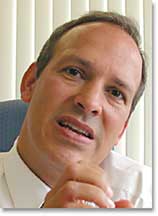
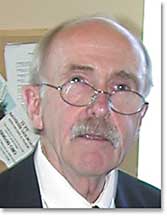 ndly, from either side -- Dikeman
charged Gallegos with incompetence, Gallegos' proxies charged
Dikeman of racism and bias toward the police. Gallegos won by
a healthy margin -- 53-46 -- but not near as healthy as his 60-40
recall win.
ndly, from either side -- Dikeman
charged Gallegos with incompetence, Gallegos' proxies charged
Dikeman of racism and bias toward the police. Gallegos won by
a healthy margin -- 53-46 -- but not near as healthy as his 60-40
recall win.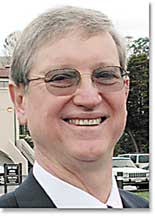 In
response, President Rollin Richmond has made it a priority to
improve HSU's image, thereby attracting more money, um, students
to HSU. The university revised its website and Mission-style
welcome gates and kiosks popped up all over campus. The marketing
efforts (deemed wasteful and tacky by most locals) seem to have
actually worked: 2006's freshman class of 980 students was the
largest ever, 10 percent bigger than the year before. HSU still
fell short of its overall enrollment target however, and the
university found itself up against a $2 million deficit for 2006-07.
(A consultant's analysis of HSU's fiscal crisis is scheduled
to be released by the university later this week.)
In
response, President Rollin Richmond has made it a priority to
improve HSU's image, thereby attracting more money, um, students
to HSU. The university revised its website and Mission-style
welcome gates and kiosks popped up all over campus. The marketing
efforts (deemed wasteful and tacky by most locals) seem to have
actually worked: 2006's freshman class of 980 students was the
largest ever, 10 percent bigger than the year before. HSU still
fell short of its overall enrollment target however, and the
university found itself up against a $2 million deficit for 2006-07.
(A consultant's analysis of HSU's fiscal crisis is scheduled
to be released by the university later this week.) The
controversy first erupted in October, when the Mateel board of
directors and the organization's current executive director,
Taunya Stapp, announced publicly in a letter sent to Mateel members
that the nonprofit was facing a "severe financial crisis"
due to a shortfall in revenue from Reggae on the River. According
to the board, a People Productions projection of a quarter million
net income from the 2006 festival was revised downward, post-Reggae,
to $16,000. The board warned that without the expected income,
"the long term viability of the Mateel Community Center
is uncertain."
The
controversy first erupted in October, when the Mateel board of
directors and the organization's current executive director,
Taunya Stapp, announced publicly in a letter sent to Mateel members
that the nonprofit was facing a "severe financial crisis"
due to a shortfall in revenue from Reggae on the River. According
to the board, a People Productions projection of a quarter million
net income from the 2006 festival was revised downward, post-Reggae,
to $16,000. The board warned that without the expected income,
"the long term viability of the Mateel Community Center
is uncertain." restfuls
of trees and power lines, drove the sea over the highway and
plunged the region into an isolated, prolonged dark. A newsgatherer's
dream. Or nightmare.
restfuls
of trees and power lines, drove the sea over the highway and
plunged the region into an isolated, prolonged dark. A newsgatherer's
dream. Or nightmare. TIM MCKAY
TIM MCKAY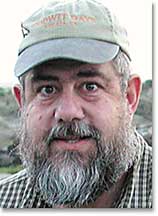 McKay
moved to Humboldt County as a young man to attend HSU, worked
for the Forest Service in 1971 and then jumped head-long into
environmental activism by helping start a group called Save Our
Siskiyous. Not long after, he joined the fledgling Northcoast
Environmental Center, where he became an integral force for the
next nearly 35 years, first as co-director and then as executive
director, the position he held at the time of his death. He and
the NEC, people said, were synonymous.
McKay
moved to Humboldt County as a young man to attend HSU, worked
for the Forest Service in 1971 and then jumped head-long into
environmental activism by helping start a group called Save Our
Siskiyous. Not long after, he joined the fledgling Northcoast
Environmental Center, where he became an integral force for the
next nearly 35 years, first as co-director and then as executive
director, the position he held at the time of his death. He and
the NEC, people said, were synonymous.